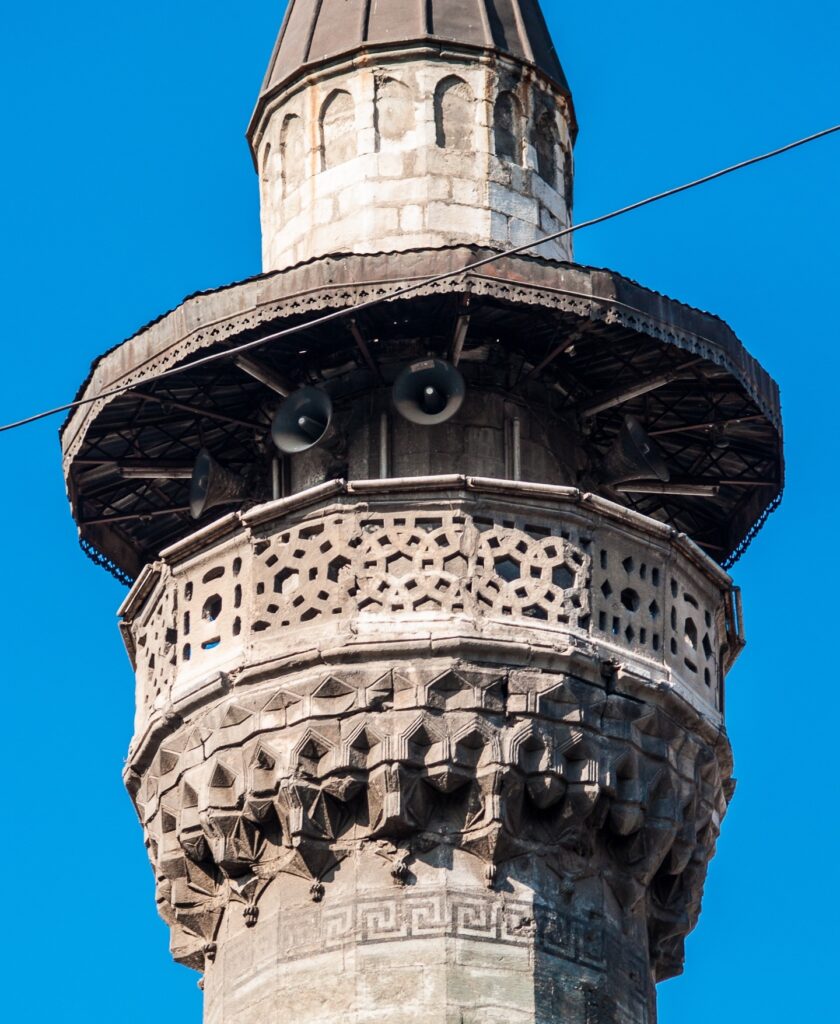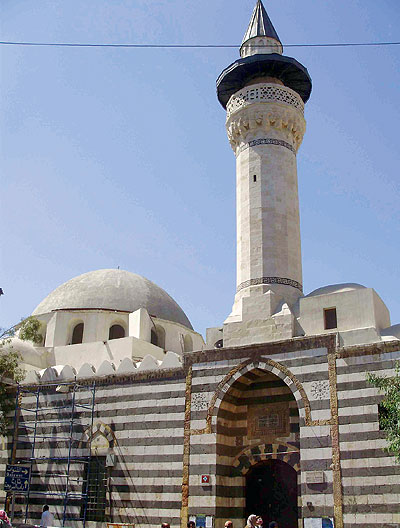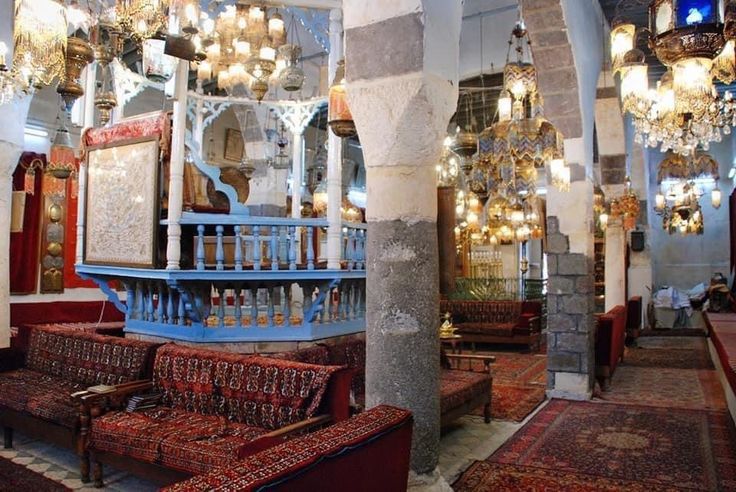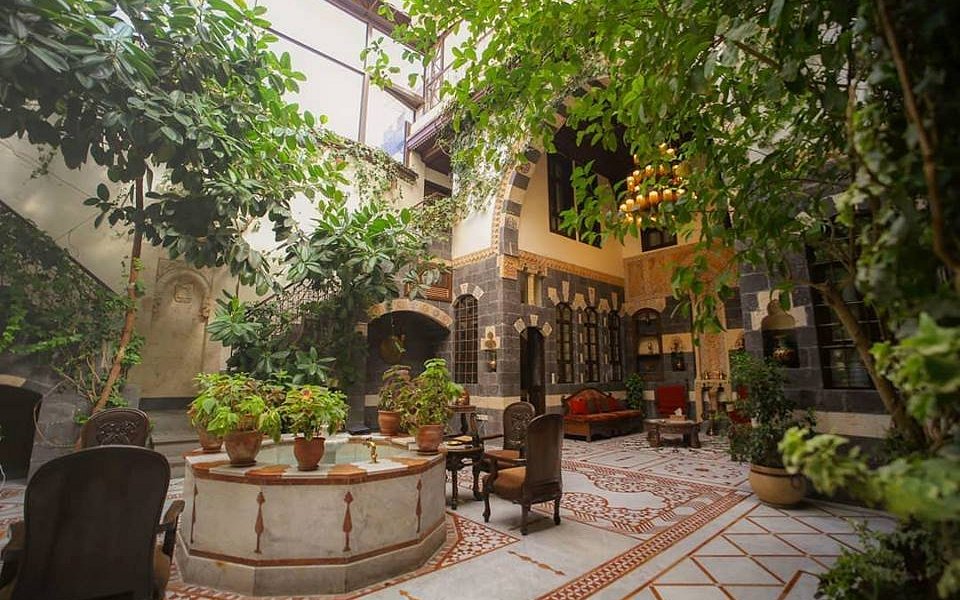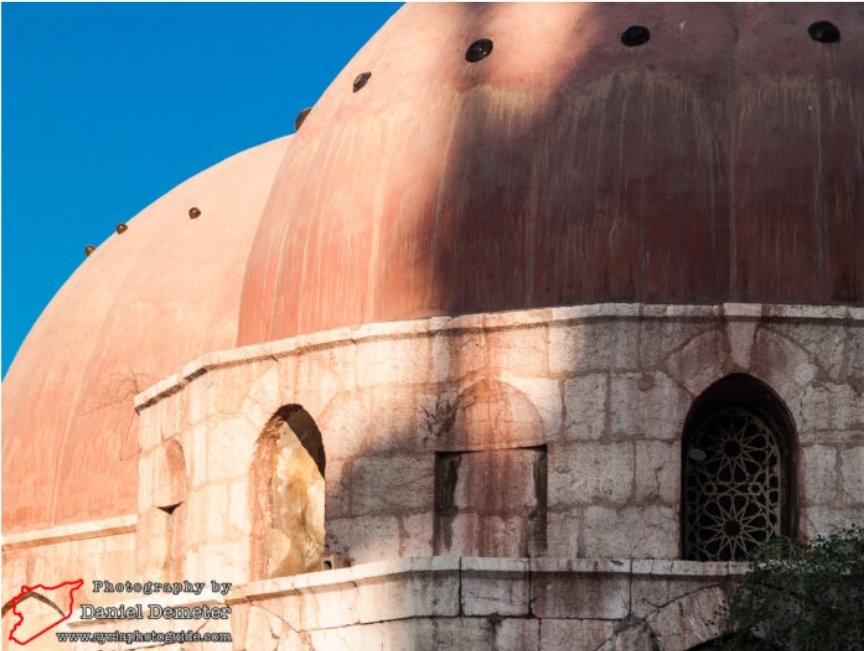Darwish Pasha Mosque—also known as *al-Darwishiyya*—has stood prominently at the heart of the *Straight Street* (*al-Shari ‘al-Mustaqim*) since 1574 CE (982 AH), when it was founded by the Ottoman governor of Damascus, Darwish Pasha Rustem. The mosque was built on an axis perpendicular to the market street, serving as a welcoming landmark for merchants arriving through Bab al-Jabiya.
Its decorated entrance, marked by an eight-pointed star motif, leads into a marble courtyard surrounded by vaulted arcades with pointed arches resting on striped black-and-white marble columns. A large lead-covered dome dominates the prayer hall, resting on a raised drum with latticed windows that flood the space with natural light. This illuminates the richly colored marble mihrab and finely carved vegetal motifs.
Upon its establishment, the mosque complex included a primary school (*maktab*), a public water fountain (*sabil*), and a burial chamber for its patrons. The stone sarcophagus of Darwish Pasha still stands in the mosque’s southern corner. In the 20th century, the mosque underwent major restoration, including the reconstruction of the minaret canopy and the repair of its colorful *qashani* tilework
